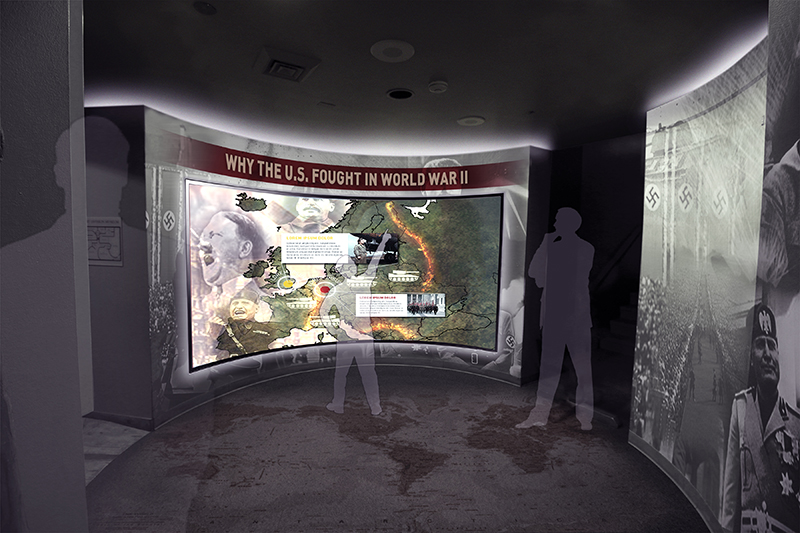The mission statement for the First Division Museum at Cantigny Park, Wheaton reads ´Preserve, Present, Promote. Our mission is to preserve, interpret and present to the public the continuing history of the US Army’s 1st Infantry Division, the Big Red One, in order to promote learning about our country’s military.” This mission statement will be adhered to fully when the museum reopens to the public with a set of new, interactive exhibits that are designed to commemorate the 100 years of the 1st Infantry Division’s existence and its contribution to America’s military prowess.
The museum will officially close its doors on Veterans Day in November 2016 and will reopen to the public to coincide with the centennial anniversary of the First Division and World War I, in the summer of 2017. They will then be ready to welcome the 170,000 people who visit on an annual basis.
The museum’s management announced the start of a $7 million upgrade to the exhibits that are currently on display. These exhibits span the Division’s history from when it was started in 1917 through to the Vietnam War. They will add new exhibits that cover more recent history where the emphasis will be on the deterrence, peace-keeping and counterinsurgency tasks undertaken by the Division in Kuwait, Iraq, and Afghanistan.
Paul Herbert, the museum’s Executive Director, said, ´ The division is still on active duty, it’s still serving us. It’s got more story to tell. As time marches on, more and more of our visitors have less personal identification with those more distant conflicts and more immediate identification with things that have happened within their lifetimes. So we have to meet the needs of our visitors.”
This museum was founded in 1960 and the last major renovation and upgrade were done in 1992 when it moved to its current location within the Cantigny Park Visitors Center. Exhibits have been upgraded and managed over the years but the time has come to give the museum a major overhaul and ensure the exhibits remain fresh and interesting for all visitors.
Cantigny Park is the former estate of Col. Robert R. McCormick, a veteran of the First Division who fought in France during World War I.
This museum is a favourite for many Americans and whilst the exhibits will be upgraded all the old favourites will remain in place. Herbert assures visitors that, “You’re still going to be able to walk through the World War I trench, you’re still going to be able to go up on the beaches of Omaha, you’re still going to be able to walk through the Vietnam jungle. Those are kind of our crown-jewel experiences, and visitors tell us over and over again, ‘We love it.’ We’re not changing it.”
The company that has been retained to undertake the renovations, Luci Creative, has said that whilst the museum will not be physically rebuilt, the inside will be dramatically different when it reopens its doors.
A.J. Goehle, director of strategy and design at Luci Creative, said, “We’re using interactivity to involve visitors to go deeper into the content while also allowing us to create more immersive experiences. It’s an immersive experience, using projection and media and narration and all those kinds of great ways that we can layer in the voice of that time and some storytelling, not just through screens you can touch everywhere.”
The museum will be divided roughly into three areas. The first is the existing 10,000 square foot current display area. These displays will be retained but refreshed using digital components, text updates, and new panel displays. The 2,700 square foot temporary exhibit area will be converted to permanent displays and focussed on the First Division’s history post-Vietnam. The last area to be considered is the lobby, the introduction to Big Red One.
The designs are not all finalized as yet and several new concepts are still being discussed. Suggestions such as a convoy that visitors could climb into and audio-visual ‘story pods’ that would allow visitors to communicate with soldiers are being considered.
Hebert hopes that the new exhibits will allow visitors to appreciate and recognize what First Division soldiers have done and why they have done it. “You’ll be able to listen to the soldiers explaining their service in their own words,” he said. “We can’t all be in the Army, but we can have empathy for our soldiers, we can be well-informed about who they are and what we ask them to do because we ask them to do a lot.”
The new museum should be a jewel in the crown of military museums within America and should be a must-visit for anyone interested in military history.
